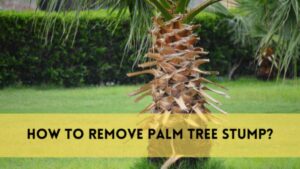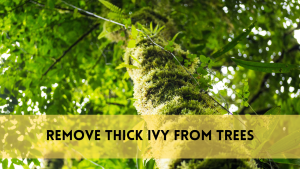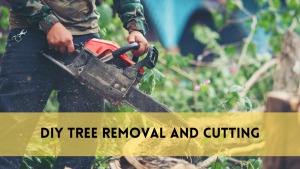Palm trees, with their attractive appearance and tropical spirit, provide refinement to settings. However, preserving their visual appeal frequently necessitates dealing with seed pod maintenance. These pods, which are necessary for the tree’s reproduction, can become a source of concern when they accumulate, possibly leading to a congested and untidy environment. The act of removing seed pods from palm trees is critical not only for the look of the tree but also for the safety and cleanliness of its surroundings. This article will look at practical ways and procedures for remove seed pods while keeping the natural beauty and health of palm palms.
Understanding Palm Trees and Their Seed Pods
Palm trees, with their towering grandeur and tropical charm, contain peculiar seed pods that are essential to their reproductive cycle. These pods, which vary in size, shape, and color depending on the palm species, serve an important role in the propagation of new growth. These pods often range in size from small, spherical structures to bigger, rectangular shapes and come in green, brown, or black hues.
Seed pods play an important role in the life cycle of palm trees because they carry the seeds required for future growth. However, their buildup can pose problems, generating congestion and possible risks in outdoor places. Recognizing the variability of seed pods across different palm species is critical when considering removal techniques, ensuring optimal management while keeping the intrinsic appeal of these famous plants.
Identifying Palm Tree Seed Pods
Identification of palm tree seed pods necessitates a sharp eye for their distinguishing traits. These pods vary widely in form, size, and color depending on the palm species. Some pods are tiny and spherical, while others are bigger and longer. When young, the color spectrum ranges from vivid green to earthy brown or black as they age.
It is critical to observe the distinctive characteristics of these pods for appropriate identification. Notably, the number and placement of pods on a palm tree can vary, giving to its distinct look. Understanding these characteristics assists in identifying between different palm species and is critical in adopting effective removal and maintenance procedures.
The Importance of Seed Pod Removal
Efficient seed pod removal from palm palms is crucial for both aesthetic and practical reasons. While these pods are necessary for palm reproduction, their excessive buildup can cause a number of problems. For starters, too many pods produce a cluttered setting, reducing the visual attractiveness of the landscape. Furthermore, they can be dangerous, especially in high-traffic areas, causing slips and falls.
Furthermore, excessive seed pod accumulation may result in unintended germination, resulting in the establishment of new trees in inappropriate sites. Regular removal not only keeps things clean, but it also keeps nearby structures and landscapes safe. By successfully regulating seed pod removal, one may provide a neat, hazard-free environment while keeping the palm’s inherent beauty without interfering with its reproductive cycle.
Gather Necessary Tools:
Gather the required tools for the task, including:
- Pruning shears or loppers
- Protective gloves
- Long-handled pruner for taller trees
- Safety goggles (if working at heights)
How to remove seed pods from palm trees
Examine the Tree: Examine the palm tree to determine the position and amount of seed pods. Determine the height and accessibility of the pods for effective removal.
Safety Precaution: Wear protective gloves to protect your hands from any potential thorns or sharp edges on the pods. When working at heights, utilize a strong ladder and safety equipment.
Selective Pod Removal: Use pruning shears or loppers to remove seed pods selectively. Begin with the lowest hanging pods and work your way up. Cut the pods at their base with care to avoid damaging the tree.
Taller Trees: For taller palm trees, use a long-handled pruner or pole pruner to reach higher pods. When working at heights, use these instruments with caution and stability.
Pod Disposal: Place the extracted seed pods in a container or bag for disposal. Dispose of them properly to avoid potential germination or polluting of the landscape.
Clean-up and Maintenance: After removing the seed pods, examine the tree for any residual pods or debris. To keep the surroundings neat, dispose of any falling bits and trimmings.
Schedule regular inspections to monitor fresh pod growth and undertake timely removal to prevent excessive buildup.
You can efficiently remove seed pods from palm trees by following this precise approach, providing a well-maintained and visually beautiful environment.
Professional Tree Care Services
In cases where palm trees are exceptionally tall or the quantity of seed pods is substantial, seeking assistance from certified arborists or tree care specialists is advisable. These professionals possess the expertise and tools necessary to safely and efficiently remove seed pods without causing harm to the tree.
When is the best time to remove seed pods
The best time to remove seed pods from palm trees varies depending on the species and environmental circumstances. However, as a general rule, seed pod removal should be done during the tree’s dormant or low-growth seasons. In many areas, late spring or early summer is a good period for this work. Palm trees tend to demonstrate less reproductive activity during these months, giving it an ideal time for effective removal without dramatically affecting the tree’s development cycle. During this stage, removing seed pods can assist prevent fresh seeds from distributing while limiting possible tree injury. Furthermore, annual inspections allow for the prompt removal of pods, maintaining a well-maintained landscape and healthy palm trees.
FAQS
Q: When is the optimum time to remove seed pods from palm trees?
A: The best time to remove seed pods is during the tree’s dormant or low-growth period, which is often in late spring or early summer. This phase minimizes interruption to the tree’s development cycle while efficiently controlling pod removal.
Q: Can I remove seed pods by hand?
A: Yes, manual removal is effective for lesser palm trees or restricted pod volumes. To remove pods, use gloves and pruning shears, taking care not to hurt the tree.
Q: How can I remove seed pods from towering palm trees?
A: For larger trees, try using a long-handled pruner or pole pruner to securely reach upper pods. Work at heights requires extreme caution and steadiness.
Q: Do you provide expert palm tree pod removal services?
A: Yes, trained arborists or tree care professionals provide expert services for large pod removal or tall trees. They have the knowledge and tools required for safe and fast pod removal.
Q: What should I do with the seed pods that have been removed?
A: Collect the removed seed pods in a container or bag and properly dispose of them to prevent germination or littering. Proper disposal contributes to the preservation of a clean environment.
Conclusion
Finally, handling palm tree seed pods is an important part of maintaining the beauty and cleanliness of your landscape. Understanding the many types of seed pods, their significance, and utilizing appropriate removal procedures are essential for keeping a healthy palm tree while maintaining a visually pleasing setting.
To get the best results, evaluate the palm tree’s individual requirements and, if required, seek expert assistance for effective seed pod removal. You may enjoy the beauty of palm palms without the bother of abundant seed pods by adopting preventive actions.
How useful was this post?
Click on a star to rate it!
Average rating 2.8 / 5. Vote count: 357
No votes so far! Be the first to rate this post.




